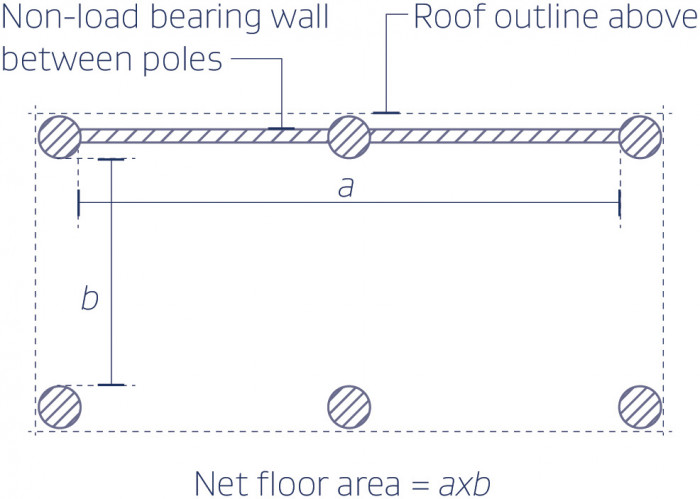Notes for Single-storey pole sheds and hay barns in rural zones: 2.6-2.7
There are two separate exemptions for single-storey pole sheds and hay barns. You will need to check which professional to hire according to the specifications.
There are two separate exemptions for single-storey pole sheds and hay barns. You will need to check which professional to hire according to the specifications.
- Single-storey pole sheds and hay barns that do not exceed 110 square metres in net floor area where the design is carried out or reviewed by a chartered professional engineer.
- Single-storey pole sheds and hay barns that do not exceed 110 square metres in net floor area where the design and construction is carried out or supervised by a licensed building practitioner.
Before you begin your project, you need to consider the following:
District planning
Always check with your local council to make sure your proposed building work does not have any district planning implications taking consideration of maximum site coverage, yard or setback requirements, daylight access planes or permitted activities. A resource consent may be required and it is important that this is obtained before starting any building work.
Pole sheds and hay barns can be enclosed, semi-enclosed or open structures which are used for farming activities in rural zones. They commonly house livestock, such as cattle and horses, as well as equipment and fodder, and often grain. Pole sheds and hay barns covered in this exemption are expected to be classified as Importance level 1 in accordance with Clause A3 of the Building Code.
This exemption is location dependent. Firstly, single-storey pole sheds and hay barns must be located in rural zones as defined in the glossary of this document. Secondly, the design wind speed at a given location must not exceed 44 metres per second or alternatively, a wind zone shall not be greater than a "high" wind zone. An owner can find information about design wind speed in NZS 3604 and AS/NZS 1170.2 which are both referenced by B1/ VM1 or B1/AS1. Most councils also have generic wind zone information for their jurisdiction, and owners can seek professional advice to determine the design wind speed or the wind zone in specific locations. If your council doesn’t have wind maps, you must seek professional advice.
NZS 3604:2011 Timber-framed buildings which references design wind zones
AS/NZS 1170.2:2011 which references design wind zones
Change of use
Owners must not convert a pole shed or hay barn to another type of use unless the owner notifies the council of the proposed change of use as required by section 114 of the Building Act 2004, and the change of use complies with section 115 of that Act.
Stormwater
You need to consider the Building Code requirements regarding the disposal of stormwater from the roof of your building. You may need to seek professional guidance and seek approval from to your council. All new drains must be laid by an authorised drainlayer.
Building close to boundaries
In order for the buildings described in this section to be exempt from needing a building consent, they need to be more than the measure of their own height away from any residential buildings, public road, railway or legal boundary. If your proposed building will be closer than this, then you will need a building consent.
Measuring the net floor area
The net floor area in a building is measured to the inside of the enclosing walls or posts/columns. There is no restriction on the building materials that can be used.
